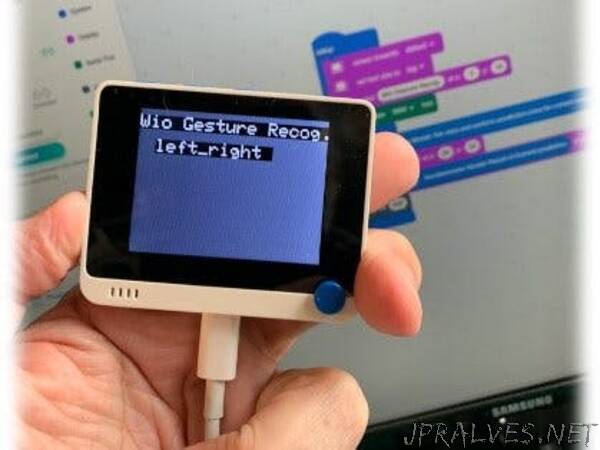
“Seeed Wio Terminal programed using Codecraft/Edge Impulse is a fantastic tool for beginners to start on tinyML (Embedded Machine Learning).
TinyML
This project mixes Machine Learning (that is part of Artificial Intelligence) with a small device (Wio Terminal), which is nothing more than a microcontroller and sensors, whose main characteristics are ultra-low power consumption, 32-bit CPU, and a few kilobytes of memory. This new field of engineering is known as Embedded Machine Learning, or tinyML.
As we know, Microcontrollers (or MCUs) are very cheap electronic components, usually with just a few kilobytes of RAM, designed to use tiny amounts of energy. Nowadays, MCUs can be found embedded in almost any consumer, medical, automotive, and industrial devices. It is estimated that over 40 billion microcontrollers are sold every year, and probably hundreds of billions of them are in service nowadays. But, interestingly, those devices don’t get much attention because they’re often only used to replace functionality that older electro-mechanical systems could do in cars, washing machines, or remote controls.
More recently, with the IoT (Internet of Things) era, a significant part of those MCUs is generating “quintillions” of data, that in its majority, is not used due to the high cost and complexity (bandwidth and latency) of data transmission.
On the other side, in recent decades, we have seen a lot of development of Machine Learning models (aka Artificial Intelligence) trained with tons of data in very powerful and hungry mainframes.
But what is happening today is that suddenly, it become possible to take noisy signals like images, audio, or accelerometers and extract meaning from them by using neural networks. And what is more important is that we can run these networks on microcontrollers and sensors themselves using little power, interpreting much more of those sensor data that we are currently ignoring. This is tinyML, a new area that enables machine intelligence right next to the physical world.”
